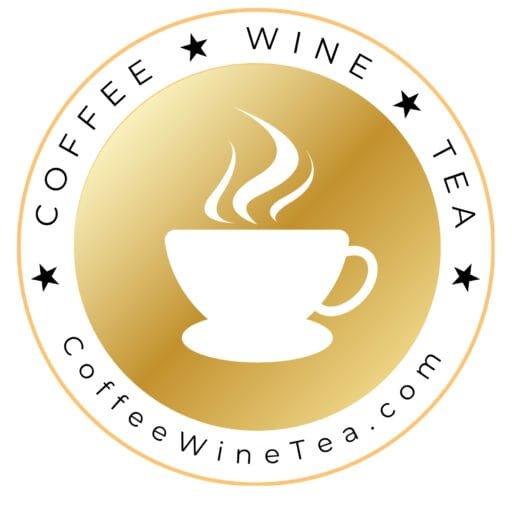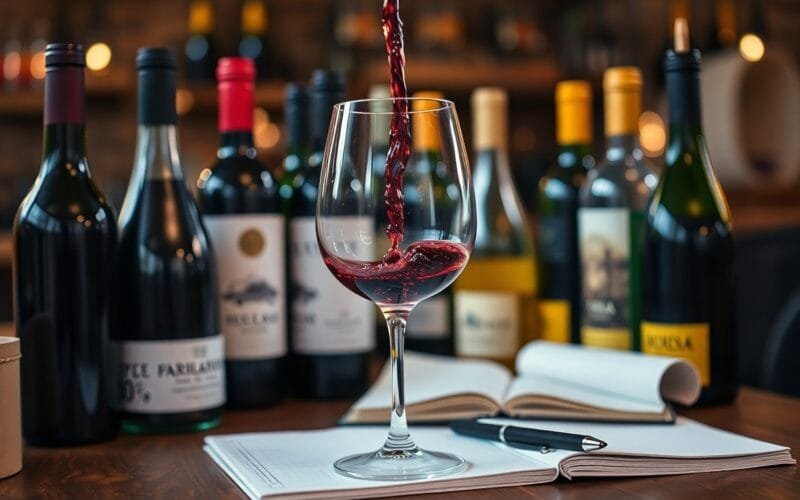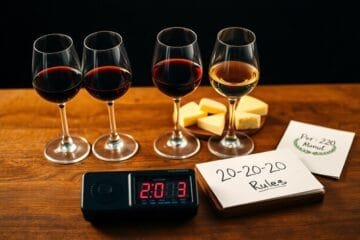Tasting wine can be an art, and with a few simple tricks, you can elevate your experience significantly. Whether you are a novice or a budding connoisseur, understanding the nuances of wine tasting can enhance your appreciation for flavors, aromas, and textures. In this post, you’ll discover effective techniques that wine enthusiasts swear by, enabling you to identify subtle notes and make informed choices for your next bottle. Embrace these tactics and transform the way you enjoy each sip!
Key Takeaways:
- Understanding the technique of swirling and smelling wine can significantly enhance the tasting experience by releasing aromas that affect flavor perception.
- Paying attention to the wine’s appearance, including color and clarity, helps in assessing quality and anticipating taste profiles.
- Practicing the skill of tasting in a systematic way—considering sweetness, acidity, tannins, and body—will allow for a more thorough evaluation of different wines.
The Sensory Journey: Engaging Your Senses in Wine Tasting
Wine tasting is not just about discerning flavors; it’s an immersive sensory experience. Engaging your senses during this process invites a deeper connection with the wine. Begin with the visual appeal—observe the color and clarity in the glass, which can signal age and varietal characteristics. The next step leads you to a world of aromas, and finally, the nuanced flavors that awaken your palate. Elevating your tasting skills means becoming attuned to each sense that plays a part in this delicious journey.
Identifying Aromatic Profiles: The Art of Swirling and Sniffing
Swirling your wine in the glass releases a whirlwind of aromatic compounds, creating a symphony of scents. As you lean in for a sniff, pay attention to the different layers; you might detect fruity, floral, or spicy notes. Take your time to unravel each aroma, which can hint at the grape variety, region, and even the winemaking techniques involved. The nuanced details lie in the subtleties, so let your nose guide you through this captivating olfactory experience.
Tasting Textures: Understanding Mouthfeel and Body
Mouthfeel and body are integral aspects of your wine tasting experience that often go unnoticed. The weight or lightness of the wine you experience in your mouth brings depth to your overall perception. Factors such as glycerol content and acidity contribute to a wine’s richness—a heavier wine may feel creamy or silky, while a lighter option can feel crisp and refreshing. Recognizing these textures not only refines your palate but also reveals the craftsmanship behind every bottle.
When exploring mouthfeel, consider how various elements come together to create a complete sensory profile. Full-bodied wines often exhibit rich textures, reminiscent of oil or cream, eliciting a sense of indulgence. In contrast, lighter-bodied wines may present a sharp, invigorating feel, much like biting into a fresh apple. Notably, the presence of tannins adds yet another layer; a robust red might leave a drying sensation on your gums, while a smooth white can glide effortlessly across your tongue. Paying attention to these textural differences enriches your tasting prowess and enhances your overall enjoyment of the wine.
Elevating the Experience: The Power of Context
Context influences how you perceive and enjoy wine, transforming an ordinary tasting into a memorable occasion. The surroundings, the company, and even the mood can enhance or detract from the flavors and aromas in your glass. By creating the right environment, you allow your senses to focus on the wine, enabling a deeper appreciation of its nuances. Whether you’re in a bustling restaurant or a quiet backyard, paying attention to these elements can lead to a more refined tasting experience.
Pairing Perfection: Enhancing Flavors Through Food
Choosing the right food pairing can elevate your wine tasting significantly. Foods can complement or contrast with the wine, bringing out hidden complexities. For instance, a rich Cabernet Sauvignon pairs beautifully with grilled steak, as the tannins soften with the meat’s fat, enhancing both tastes. Conversely, pairing a crisp Sauvignon Blanc with goat cheese highlights the freshness of the wine while softening the cheese’s tangy flavor. The art of pairing also allows you to explore how different flavors interact, creating a harmonious dining experience.
Ideal Serving Conditions: The Influence of Temperature and Glassware
Serving wine at the optimal temperature and in the right glass can profoundly affect your tasting experience. White wines typically shine when chilled between 45°F and 50°F, while reds flourish at a more moderate 60°F to 65°F. The glass you choose also plays a key role; a wider bowl allows reds to breathe, exposing them to oxygen, which softens tannins and releases aromatic compounds, while narrower glasses for whites preserve their freshness and acidity. Adjusting these details enhances your overall enjoyment and appreciation of the wine.
Wind Down: Optimal Temperature and Glassware Table
| Wine Type | Ideal Temperature |
|---|---|
| Light Whites | 40°F – 45°F |
| Full-Bodied Whites | 45°F – 50°F |
| Light Reds | 50°F – 55°F |
| Medium Reds | 55°F – 60°F |
| Full-Bodied Reds | 60°F – 65°F |
Visualizing the ideal serving conditions can make a significant difference in your tasting performance. The right glass shape can enhance the aroma profile by directing scents to your nose. For example, a Pinot Noir glass has a larger bowl to allow for aeration, whereas a standard wine glass is more suitable for lighter wines. Additionally, serving wines slightly colder than the recommended temperature brings out more aromatics in whites, while warmer reds can present dominant alcohol notes. Mastering these elements allows you to fully appreciate your wine’s complexity.
Impact of Temperature and Glassware Table
| Aspect | Effect on Tasting |
|---|---|
| Temperature | Affects aroma release and flavor perception. |
| Glass Shape | Affects airflow and how you experience the wine’s bouquet. |
Breaking Down Complexity: Simplified Tasting Techniques
Tasting wine doesn’t have to be an intimidating affair. By breaking down the process into simple, manageable techniques, you can enhance your ability to appreciate the complexities within each sip. Concentrating on a few key methods allows you to refine your palate without feeling overwhelmed, ultimately leading to a deeper understanding and enjoyment of your wine. Simplified tasting techniques can help even the novice wine drinker identify subtle notes and flavors, enriching the overall experience.
The Five S’s: See, Swirl, Sniff, Sip, and Savor
The Five S’s offer a structured approach to tasting wine that allows you to engage fully with the sensory experience. Start by observing the wine’s appearance and color, followed by swirling it in your glass to release aromas. Sniff deeply to capture the bouquet, then take a small sip to assess the taste on your palate. Finally, savor the finish and notice how long the flavors linger. This method cultivates mindfulness and attention, leading to a more rewarding tasting experience.
Spotting Flaws: Identifying Common Off-Flavors
Recognizing flaws in wine significantly enhances your tasting skills, helping you discern between a quality bottle and one that’s been compromised. Familiarize yourself with common off-flavors, such as oxidation, which can produce a flat, sherried quality, or cork taint, giving a musty aroma reminiscent of wet cardboard. Identifying these flaws allows you to appreciate the nuances of wine and avoid poor selections.
A thorough understanding of common off-flavors will greatly improve your wine tasting experience. For example, volatile acidity can lead to a vinegary or acidic taste, often resulting from fermentation issues, while sulfur compounds can create unpleasant aromas akin to burnt matches. Training your palate to recognize these imperfections not only enhances your ability to choose quality wines but also enriches your conversations about wine with fellow enthusiasts. By developing your awareness of these flaws, you can elevate your overall appreciation of the craft behind winemaking.
Knowledge is Power: Expanding Your Wine Vocabulary
Mastering wine tasting relies heavily on your ability to articulate flavors, aromas, and textures. By expanding your wine vocabulary, you refine your palate and enhance your tasting experience. Terms like “tannic,” “earthy,” or “full-bodied” can help you convey what you discern in each sip. Engaging with guides, educational apps, and even wine tasting clubs can deepen your understanding of the nuances in wine, enabling you to communicate more effectively and connect with other enthusiasts.
Crafting Descriptive Language: From Palate to Finish
To fully appreciate wine, developing descriptive language is vital. Analyze how the flavors develop from the initial taste (the palate) to the lingering impression (the finish). Words like “crisp,” “buttery,” or “zesty” convey imperative characteristics of the wine. With practice, you can create vivid descriptions that paint a picture of your tasting experience for others, allowing you to share your passion and insight.
Creating a Personal Flavor Journal: Documenting Your Journey
Your journey into the world of wine deserves a dedicated space. A personal flavor journal is an invaluable tool where you can document your experiences, thoughts, and reflections on different wines. By recording the varieties you’ve tasted, their unique characteristics, and your personal ratings, you build a comprehensive resource that reflects your growth as a wine connoisseur.
Keeping a flavor journal goes beyond mere record-keeping; it fosters a deeper connection with wine. You might note how a certain Merlot’s plummy richness contrasted with a zesty Sauvignon Blanc or recall your emotional response to a wine shared with friends during a celebratory dinner. The act of writing forces you to slow down, focus on sensory details, and truly absorb your experience. Over time, your journal becomes a treasure trove of memories and patterns, enhancing your palate and guiding future choices.
Transformative Insights: Shifting Your Wine Perspective
Turning your wine experience into a more enriching encounter often requires a fresh perspective. Embracing new techniques, such as what does it mean when a sommelier swirls the wine, can reveal hidden aromas and flavors. By adjusting how you perceive and appreciate wine, you can uncover layers and subtleties that elevate your tasting experience. This shift often transforms wine from a simple beverage into a profound journey of exploration and enjoyment.
The Value of Blind Tastings: Testing Your Palate Without Bias
Blind tastings strip away preconceived notions tied to labels and regions, allowing you to focus solely on the flavors in your glass. When you taste without knowing the wine’s identity, your palate becomes the sole judge. This practice not only builds confidence but often leads to surprising discoveries about your preferences. Engaging in these tastings regularly can significantly enhance your ability to discern quality wines and subsequently change how you approach purchasing and pairing.
Lessons from Connoisseurs: Insights from Industry Experts
Industry experts often underscore the importance of community and shared experiences in wine appreciation. For instance, many sommeliers advocate for the art of conversation during tastings, which can unveil insights you might not discover alone. Engaging in dialogue about specific flavors or techniques offers a richer understanding of the wine’s character. Additionally, seasoned connoisseurs recommend maintaining a wine journal to track your tasting notes over time. This not only enhances your ability to reference past experiences but also encourages a deeper connection with your evolving palate.
To wrap up
Now that you understand why wine connoisseurs swear by these simple tasting tricks, you can elevate your wine tasting experiences to new heights. Utilizing techniques such as proper glassware, mindful observation, and specific tasting steps will enhance your appreciation of each sip. Embrace these strategies in your next wine tasting, and if you’re just starting out, check out Setting The Scene: Your First Wine Tasting Event to fully immerse yourself in the world of wine. Cheers to your journey as a wine enthusiast!
FAQ
Q: What are some basic wine tasting techniques that can enhance my experience?
A: Wine tasting can be enhanced by employing a series of simple techniques. First, start with observing the wine’s color by holding it against a white background; this gives insight into its age and varietal. Next, swirl the wine in the glass to aerate it, allowing the aromas to fully develop. Then, take a moment to inhale deeply, noting the scents that come forward—fruity, floral, or earthy. Finally, take a small sip and let the wine coat your palate to explore its flavors and textures, considering the balance of sweetness, acidity, and tannins.
Q: Do the temperature and glass type really impact the wine tasting experience?
A: Yes, both temperature and the type of glass used have significant effects on wine tasting. For optimal enjoyment, white wines are generally served chilled (about 45-50°F), while red wines are best at a slightly warmer temperature (around 60-65°F). Additionally, using the right glass shape can enhance the aroma and flavor. For example, wider bowls are excellent for reds as they allow more oxygen to interact with the wine, while narrower glasses are preferable for whites to preserve their crispness.
Q: How can food pairings influence my wine tasting experience?
A: Food pairings play a vital role in the overall tasting experience, as they can amplify or diminish certain flavors within the wine. For instance, acidic foods, such as tomatoes or citrus, often complement white wines with high acidity, enhancing their freshness. Conversely, rich, fatty foods tend to work well with bold red wines, allowing their tannins to soften. Exploring different pairings not only elevates the wine but also offers a more rounded gastronomic experience, showcasing the versatility and complexity of the wine itself.




